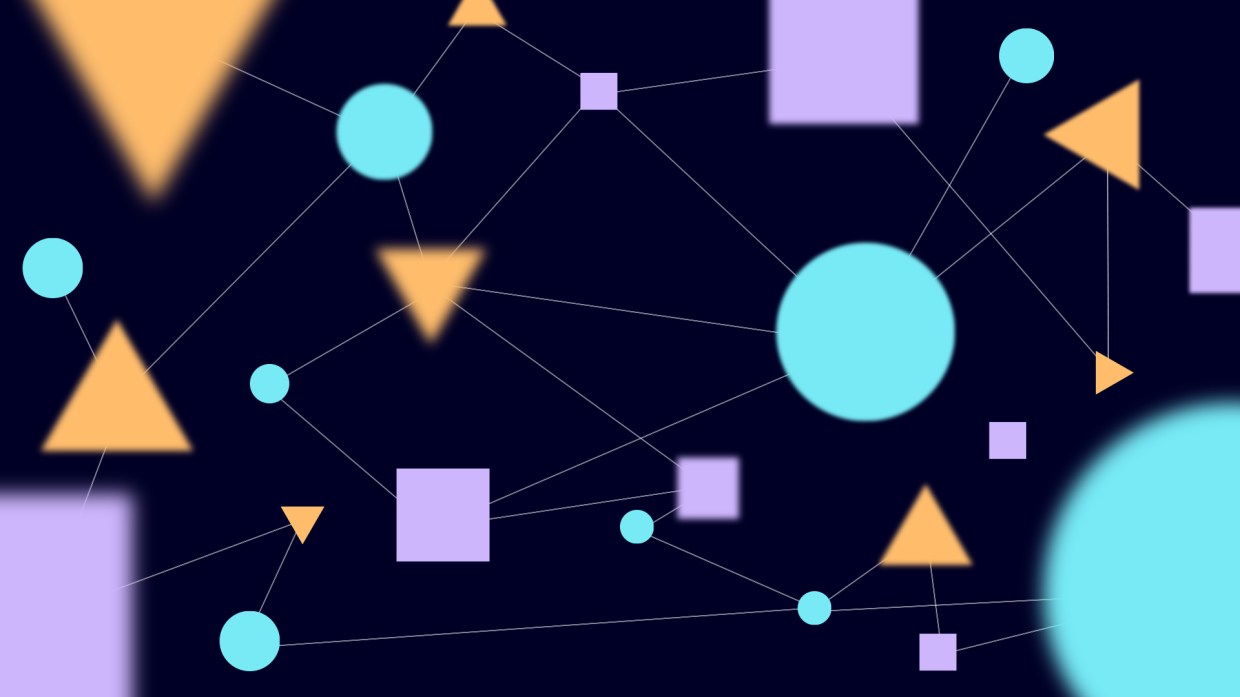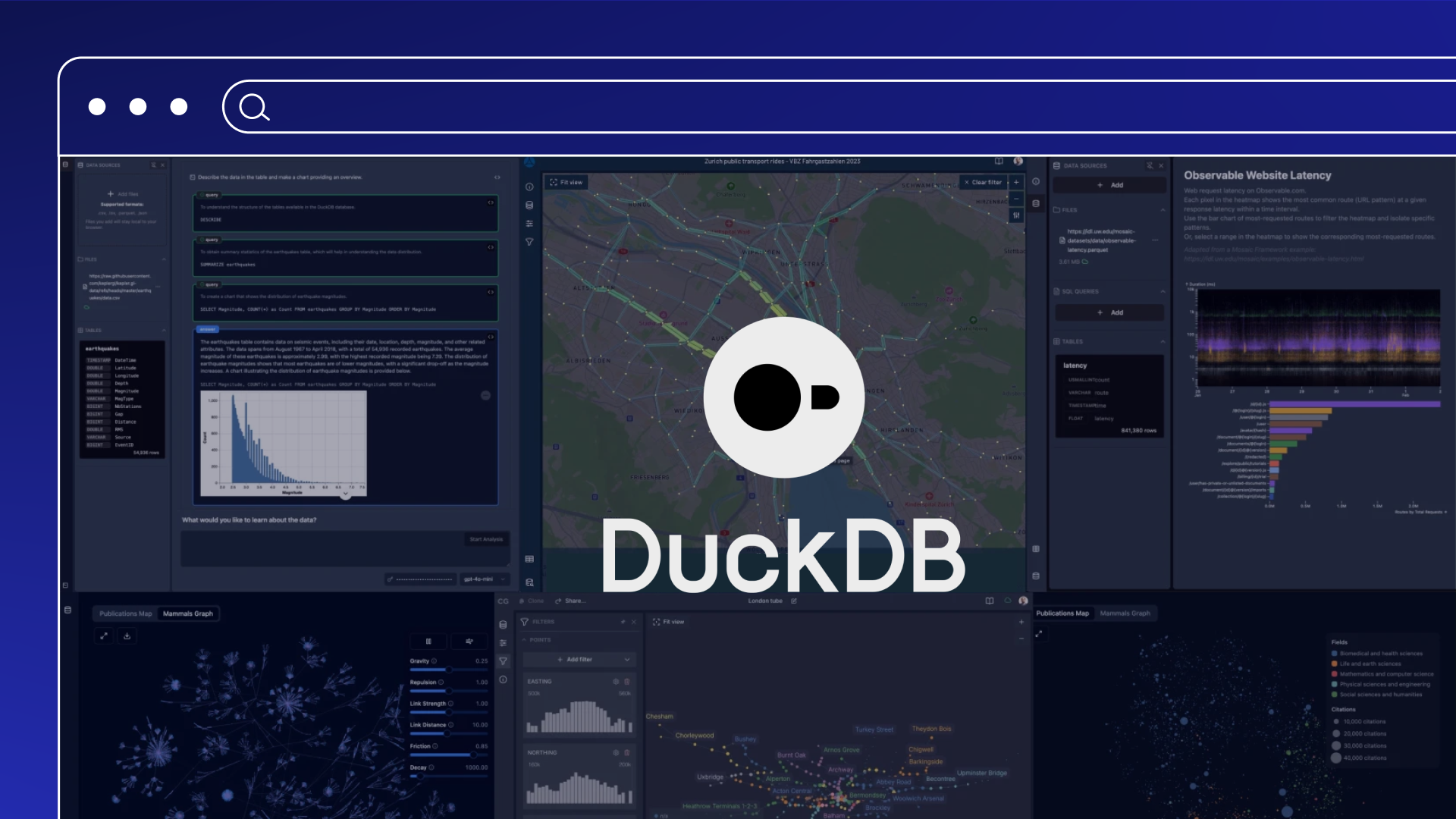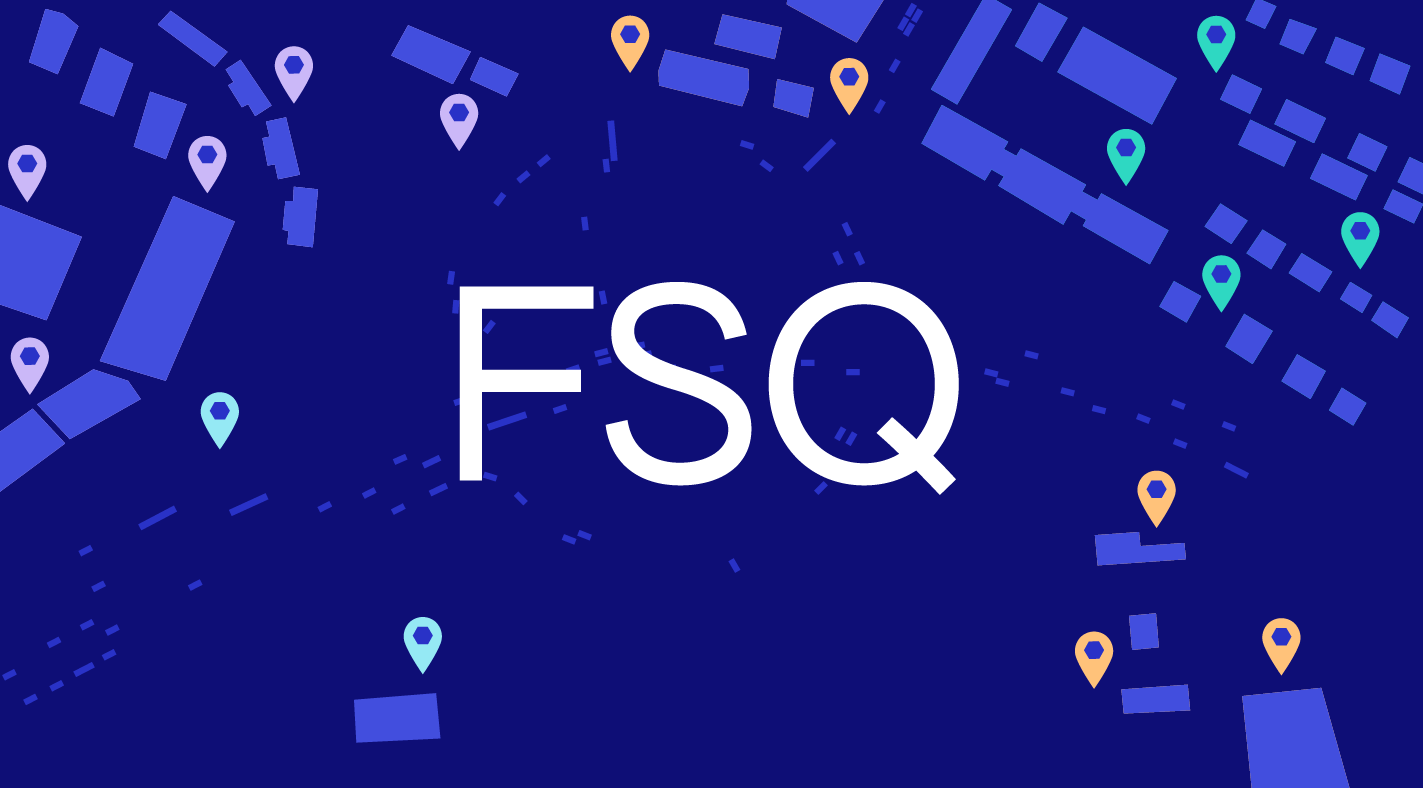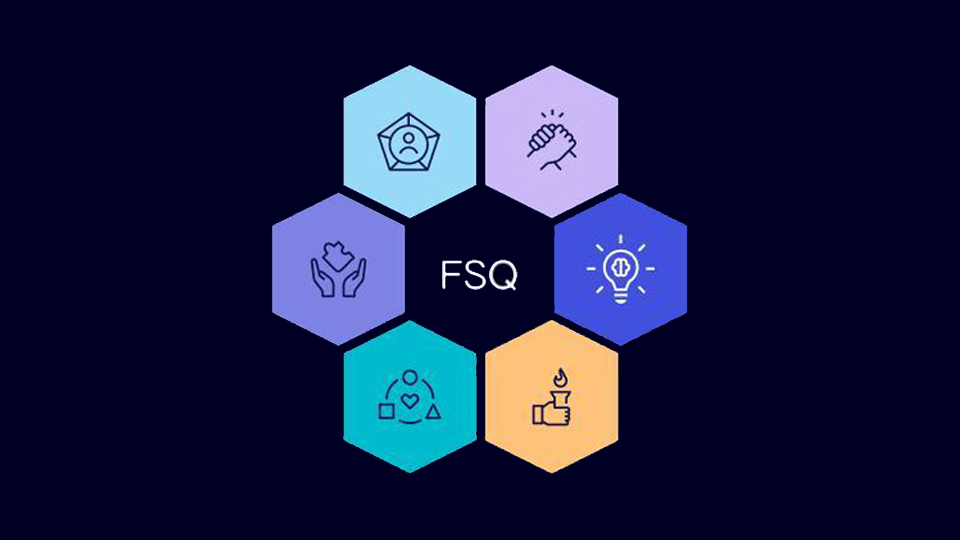Through the use of predictive analytics and sophisticated forecasting tools, businesses are gathering more data than ever before with the hopes of gaining a deeper understanding of the customer journey. The rise of artificial intelligence (AI), machine learning (ML), and natural language processing (NLP) tools are only helping business leaders tap into more of their data.
The traditional approach to storing and managing voluminous data relies on the use of relational database management systems (DBMS): rigid frameworks that do not allow the flexibility and scalability needed to harness the full potential of modern analytics solutions.
Enter graph technology.
In recent years, IT executives, data analysts, and other stakeholders across the world have recognized the value of graph technologies, and by transitioning away from relational models in favor of graphs, are making better use of the troves of data they collect.
Still, knowledge graph technology is a relative newcomer to the data management scene, and many organizational leaders remain somewhat unfamiliar with advantages the technology can provide and what the tech itself can be used for. With that in mind, join us as we take a deep dive into graph databases, including what they are, why you should care about them, and how you can put them to use.
Why You Should Care About Graph Technology
Before we get into the details of graph technologies, it is important to first explore why the development of such a solution was necessary in the first place.
It all boils down to the proliferation of data. Organizations are generating, collecting, storing, and managing more data than ever before, and although that information represents a valuable resource that can be used to guide decision-making and pursue growth opportunities, the sheer volume that organizations collect has created a host of usability nightmares.
Relational DBMS lack the scalability and flexibility necessary to keep pace with the ever-growing data management needs of today’s businesses. In addition, the systems are not only rigid, but incredibly costly to maintain as well.
Over the last decade, knowledge graph technology has experienced a surge in popularity, and although graph databases still represent a relatively small percentage of all DBMS in use, the development of increasingly sophisticated and dynamic graph technology should fuel the continued adoption of these systems.
Quite recently, several such solutions have hit the market, and as of today that includes the Foursquare Graph. By integrating a graph database solution like ours into a data management strategy, an organization can move past the limitations of relational frameworks and reliably access the scalability, flexibility, and agility necessary to make better use of data.
What Is a Knowledge Graph, and How Does It Work?
A knowledge graph is a digital representation of real-world entities, such as situations, events, concepts, or objects. Alternatively known as a semantic network, a knowledge graph illustrates the connection between said entities. These structures and their relationships are visualized in the form of a graph, hence the name.
The field of graph technology can be broken down into three foundational concepts:
- Graph theory: Graph theory is an advanced mathematical concept used to identify connections between physical or logical objects, as well as relationships between manufacturing processes, data points, and just about anything else.
- Graph analytics: Graph analytics refers to the practical application of graph theory to gain insights into the relationship between entities.
- Graph database: A graph database represents a methodology for storing data. Graph databases are frequently used to generate knowledge graphs, which are models for visualizing data sets.
Graph technology can help analysts uncover previously undetected relationships between data sets. Perhaps more importantly, though, knowledge graphs can be used to identify false connections and preserve data integrity. With graph technology at your disposal, your team can rapidly find patterns within a sea of data, while also weeding out misleading correlations that hinder decision-making.
Now that we have explored how the underlying technology works, let’s shift our attention to some related concepts:
Data Relationships
Typically, graph databases feature data sets from a variety of different sources, and graph technology uses context clues, identities, and schemas to structure that diverse information.
Knowledge graphs are powered by ML technology and NLP capabilities, which the graph database then uses to perform semantic enrichment, creating a comprehensive view of labels, edges, and nodes. As additional data is ingested, the knowledge graph will continue to enrich incoming information and identify the data. Graph technology can also understand the relationship between these data sets.
After a knowledge graph has finished processing a data set, it can integrate it with similar sets of data. From there, search systems can retrieve that data to generate responses to user queries. Google — in particular, its search engine algorithm — is a shining example. It uses the aforementioned entities to differentiate between words with multiple meanings.
While you likely have the most familiarity with consumer-facing solutions like search engines, knowledge graphs can also be leveraged to support your back-end processes, such as implementing a graph database to eliminate the need for manual data collection and rapidly integrating new data sets into existing knowledge, ultimately enabling you to engage in true, data-driven decision-making.
Definitions of Graphs
Graphs consist of three core components, defined below:
Nodes
The first step to generating a graph is to list nodes. Nodes represent a person, place, or object, and they are foundational to the creation of a knowledge graph. The entire premise is to visualize real-world objects comprehensively so that the relationships between them can be identified.
For instance, let’s say that you operate an automotive manufacturing facility. Each dealership that you supply vehicles to could be a node. The individual vehicles could also be nodes themselves.
When processing data and creating nodes, graph technology will use ML and NLP tools to identify and contextualize what each object, place, or person is. After it has created several sets of nodes, the graph database will begin analyzing them to identify data relationships.
Continuing the example, let’s say that one of your most popular vehicle models is the “Rocket.” Graph technology would use NLP algorithms and contextual information to determine that “Rocket” refers to a model of vehicle you manufacture, not an actual rocket.
Edges
An edge categorizes the connection between nodes. Continuing the scenario above, an edge linking your business to one of your downstream car dealers, for instance, would identify your connection as a supplier/retailer relationship. In the case of your vehicles, the edge would categorize the link as a manufacturer/product relationship.
Each edge will only connect a pair of nodes, but multiple edges can stem from one node and branch out to related nodes. In our example, the node that represents your manufacturing facility would have two edges: one linked to your dealership and one connected to the vehicle.
Every edge and pair of nodes is assigned a Unique Resource Identifier (URI), which helps structure the data and create well-defined semantics.
Properties
Properties describe the characteristics or attributes of each knowledge graph entity. They can be assigned to individual nodes or a pair of related nodes.
In our example, you may assign properties to a vehicle that lists its weight, physical size, or cost. Each of these attributes must be defined using a separate property. You could also assign properties to the dealership, such as its location, number of employees, operating hours, or showroom size.
It’s possible to assign an unlimited number of properties to each node. Naturally, the more contextual data provided to graph technology, the more effective it will be at analyzing it and identifying edges.
Interactive Building Blocks
In most DBMS, individual data points take priority, and after they are identified, the system will then begin analyzing the relationships between each of them, which is perhaps the biggest difference between graph databases and any other DBMS.
In the graph world, relationships come first. Think of nodes as building blocks that represent real-world objects and the edges as the components that provide meaningful insights about nodes and how they relate to one another.
Since graph technology prioritizes connections and relationships, it remains aware of them throughout the entire data management lifecycle, from intake to analysis. While other management systems must infer connections using out-of-band processing or foreign keys, knowledge graphs have the inherent ability to understand connections. As such, your model will be simultaneously more expressive yet simpler than a relational model.
Leading graph technology solutions further differentiate themselves from relational models by providing native graph storage and processing. Native graph storage is purpose-built to store and manage data in a graph format. It also optimizes query and data management capabilities, as the connections don’t have to be translated from a different DBMS model.
Native graph processing represents an extremely efficient strategy for processing data in a knowledge graph. Under such a framework, connected nodes point to one another in the database.
How Graph Technology Is Used
Google is not the only notable organization to make use of graph technology. Knowledge graphs are already being applied across a broad range of industries, from healthcare to entertainment, with NASA, eBay, and Netflix being just a handful of the corporations that are embracing graph tech.
Some other sectors that are leveraging knowledge graphs include the following:
- Healthcare: The healthcare industry is using graph technology to identify the relationships between patient symptoms and medical research, enabling providers to validate diagnoses and create tailored treatment strategies to improve patient outcomes.
- Finance: The finance industry has benefited greatly from graph technology’s ability to identify and detect complex patterns. The sector uses knowledge graphs to fight back against money laundering and to better understand customer habits.
- Entertainment: Your entertainment streaming app always seems to serve up perfect movie and TV show recommendations, and that’s because it uses a combination of machine learning, AI, and knowledge graph technology to provide a personalized experience.
- Retail: Like the entertainment sector, the retail industry uses knowledge graphs and AI to support content personalization efforts. Retailers can analyze your past purchases and other behavior to recommend or upsell products to you.
The widespread adoption of knowledge graph technology has caused the graph database market to explode, and there’s no sign of slowing down. According to Gartner, 80% of data management and analytics innovations will be fielded by graph technologies by 2025, and by 2027, the graph database market size will reach a value of $6.2 billion, representing a compound annual growth rate of 24.5%.
When This Is Applied To Location Data, It…
While there are many use cases for graph technology, some of its most profound benefits involve applying graph framework to location data. Historically, analyzing location data required a significant allocation of internal resources, making it both impractical and cost-prohibitive.
In response, Foursquare developed a first-of-its-kind geospatial knowledge graph, which has the propensity to revolutionize how clients extract insights from location data. Specifically, users will be able to decrease the time-to-value in their data harvesting efforts, shed light on previously overlooked opportunities, and discover new ways to connect with customers.
By applying graph technology to places and movement data, Foursquare is breaking down some of the biggest obstacles organizations face today, thus accelerating the time to valuable insights. Unifying Foursquare’s primitive data sets and serving as the underlying backbone to Foursquare’s full product suite, the Graph will improve data quality, enable higher velocity innovation, and unlock critical insights for the company and our customers.
The Advantages of Using a Knowledge Graph
Graph technology can be a remarkably valuable addition to an organization’s tech stack. There are several notable advantages associated with implementing knowledge graphs, especially when comparing them to relational data management models.
In particular, graph technology provides the following:
Flexibility
Flexibility is vital to remaining competitive in the modern business ecosystem. Consumer trends come and go in the blink of an eye, and other organizations are always going to be clamoring to snag a little more market share. As such, if a business wants to continue thriving, it needs a data management model that is fluid and flexible.
With a relational model, a team must devote countless hours and untold resources to model the domain. And if there is an ask to make a change, a laborious remodel will follow.
Graph databases, on the other hand, empower software engineering, data science, and analytics teams to rise to the challenges of tomorrow because graph technology provides the freedom to add or alter the data structure, without negatively impacting current capabilities.
In other words, a graph database model puts you back in the driver’s seat. With a knowledge graph, there’s no need to augment decision-making processes based on the limitations of a DBMS. Instead, you can move at the speed of business without fearing an overburdened data architecture staff.
Scalability
Think back on data collection practices of just a few years ago. The volume of data collected across industries has unquestionably increased since then, meaning savvy business leaders must constantly explore ways to gather actionable insights about their customers.
Consider what a data pipeline will look like five years from now. Chances are there will be exponentially more data collected than today. What this means is as your data grows, so do the number of connections that you need to identify, track, and analyze.
Under the relational model, as the depth and number of relationships increase, your ability to efficiently conduct queries is hindered. Whereas, graph technology can be scaled with the needs of your business to maximize data usability and accessibility.
The benefit of scalability not only promotes data usability, but also keeps hardware and maintenance costs in check. With graph technology, businesses will spend less on maintaining a DBMS, while also deriving better value from it.
Agility
Knowledge graph technology can be deployed in the cloud or on-premise. Its versatility enables companies to tailor graph database management strategies and align it with the needs of their business. Once a graph solution is live, there’s opportunity to optimize business agility and rapidly access and analyze organizational data.
Graph technology is an agile team’s dream. Your team prioritizes productivity, fast-paced decision-making, and remaining flexible amid ever-changing market conditions. Now, knowledge graphs will give them the data management capabilities they need to fully embrace the agile methodology.
Privacy
Questions around extracting value from data pop up for many organizations on a daily basis. However, many shy away from this type of data for privacy reasons.
For example, understanding a customer’s behavior typically requires the exposure of individualized data – a process that carries complex privacy implications, yet is still an industry standard. Graph technology solves this issue by surfacing trends and insights in aggregate, protecting customer data in a way that traditional practices do not.
Learn More About the Foursquare Graph
The Foursquare Graph enables our customer-centric team to rapidly build and deploy exciting new features to meet your needs. We are accelerating the velocity of innovation to deliver lasting value for your business while also equipping you to thrive in the face of tomorrow’s unforeseen business challenges.
While it is impossible to predict precisely what the business landscape of tomorrow will look like, one thing is clear: increasing accessibility and usability of data will be critical to success.
With that in mind, it’s critical to have a forward-thinking partner like Foursquare to help you put location data to use. Our knowledge graph technology leverages a proprietary tiling system, Hex Tiles, to efficiently manage and analyze large-scale geospatial data. This technology enables our team to effortlessly query geospatial data sets and provide you with actionable insights. More importantly, we can unify previously disparate processes to create new solutions for you.If you’re ready to learn more, we invite you to talk to an expert to get started.



